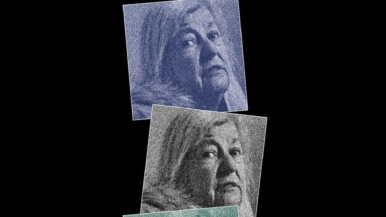California Greening
My column in the May issue of Toronto Life (on newsstands April 10) examines the burgeoning “green” wine movement, with observations and reviews based on tastings at the international Return to Terroir event in February, and Vintages’ organics release on March 29. Since then, I have compiled even more notes on the wine world’s most pressing trend. Much of the information and inspiration has come out of California, where “green” is becoming an industry-wide mantra. Grape growers are taking the lead in environmental practices and turning the heads of those in other sectors of California’s massive agricultural industry. Two insiders have told me that a stunning 55 per cent of Californian wine producers have now registered for a new program that allows for self-assessment of sustainable agriculture practices.
The two know each other well. One is Paul Dolan, incoming chair of the California Wine Institute, who helped make Mendocino-based Fetzer Vineyards one of the most green-conscious (though not officially organic) producers in the state, back when the idea was thought of as hippie-dippy. Dolan will be delivering a state-of-greenness address at the California Wine Fair trade luncheon at the Royal York Hotel on April 26, and after hearing him speak at the Vancouver Playhouse Wine Festival in February, I can tell you that Dolan is the Al Gore of organic wine—not so much for his presidential stature (he’s much more laid-back), but in his ability to communicate and inspire through his depth of knowledge.
The other is Bob Blue, current director of winemaking operations at Fetzer. He’s also the architect of Fetzer-owned Bonterra, the largest certified organic winery in the U.S., perhaps the world, with a portfolio of clean-cut varietal wines that hit 300,000 cases in its 2007 vintage. Blue has been part of the green culture at Fetzer for almost 20 years, and says that in the past two years, the growth and acceptance of organic wine has been amazing, reflected in a 30 per cent annual sales growth for Bonterra. In Vintages stores, where two Bonterra wines have Essentials listings with continuous availability, the cabernet sauvignon is the number two best-selling California red.
In California, says Blue, organic grape growing is spreading from the ground up. “Farmers are talking to farmers. More and more people are approaching our growers to find out what’s required to farm organically, and they are seeing how much sense it makes at many levels.”
One level is the quality of the fruit, which Blue evokes well in his reasonably priced $20 varietal wines. Here are reviews of the two Bonterra Essentials listings, plus the soon-to-arrive syrah. Watch for several other Bonterra releases in the months ahead, including its first sauvignon blanc in late summer; and the impressive debut biodynamic single-vineyard cabernet, merlot, petite syrah blend, called the McNab, which will slip onto shelves in October.
Bonterra 2006 Cabernet Sauvignon, Mendocino County, California ($19.95, 89 points, 342428) The new vintage shows a lovely evenness, with bright berry fruit, a touch of cabernet, green bean and tobacco, and moderate toast and clove. Mid-weight and nicely balanced, with fine tannin. Very good length. Enjoy over the next four years. Vintages Essentials.
Bonterra 2006 Chardonnay, California ($18.95, 87 points, 342436)It has a slightly stern edge, but nicely proportioned apple-pineapple fruit, with vanilla and cinnamon elements. Medium-full bodied, fresh and solid, with a lemony, spicy finish. Very good length. Best for the dinner table; not a soft aperitif sipper. Vintages Essentials.
Bonterra 2005 Syrah, Mendocino County, California ($19, 88 points, 573709) Deep black colour. Fairly generous nose of pepper, blackberry, wood smoke and clove. Medium-full bodied, firm and dry, with very good length. Long, spicy finish. Vintages March 29.
Some other organic picks:
Grove Mill 2007 Pinot Gris, New Zealand ($16.95, 88 points, 1693)Grove Mill claims the title of first carbon-neutral winery in the world. An exotic, very fruity, almost sweet and creamy pinot gris, with mango, honey, cream corn and the grape’s typical bread-crust note. Just enough fresh, lemony acidity to balance the waxy opulence. Vintages March 29.
San Michele a Torri 2005 Chianti Colli Fiorentini, Italy ($17.95, 87 points, 900258)Organic winemaking often reflects traditional techniques and wine styles. This mid-weight has more maturity than expected from a three-year-old. Soft, complex red currant, roasted chestnut, leather and damp soil bouquet. Mid-weight, edgy and dry, yet well proportioned. Serve with Italian dishes featuring sun-dried tomato. Vintages March 29.
Castanga 2004 Genesis Shiraz, Australia ($94.10, 94 points, 53298)From a small producer, whom the Aussies call the Nicolas Joly of Australia, in reference to the biodynamic movement’s crusading leader from France. Complete, intriguing shiraz, with great pure-fruit focus and syrah character—blackberry, pepper, olive, clove and smoky aromas that stay focused on the firm, elegant palate, and hit outstanding length. Best 2010 to 2020. Vintages’ Classics Catalogue.





